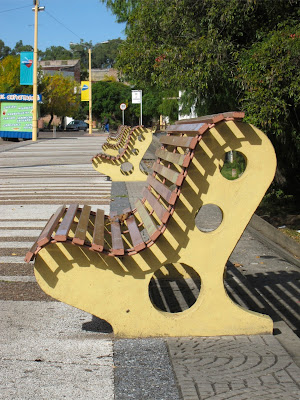Uruguay's not. It's full of quiet little towns, that are full of quiet, dignified people going about their daily lives. There are no outstanding natural features, historic monuments or ruins. If you need any of those things, or other distractions, then it's probably not for you.
Since my trip was a training exercise in travelling, what did I learn? I learnt that ATM cards, when they don't work, are totally worthless compared to good old fashioned US Dollars. I learnt that cockroaches are a non-lethal hazard to be expected in the coming months. I learnt that bus travel isn't actually that bad, but that they crank the aircon up so you need hundreds of layers despite the fact that it is blisteringly hot outside. I learnt that I actually quite like moving about. What others might be bold enough to call travelling.
The journey back last Friday was a long one with a lot of legs. The most interesting of them was the catamaran across the Tigre delta. Most interesting of that, other than the screaming little brats that filled the top deck, was the approach to Tigre, where the waters are dotted with boats in various stages of decay, disrepair and submersion.
It's pretty funny watching the toffs of Buenos Aires dodging these old shipwrecks in their speed boats. In fact it neatly sums up a lot of the contrasts and contradictions of the city. Other places, they might try and clear the old stuff out of the way. Not here - they work around it. They let nature take its course. The city, the landscape or - in this case - the river, will eventually assimilate the things that are dying in its midst. Meanwhile life goes on around. Me - I'm heading home, to spend one more week "doing" nothing, before home moves on once more.















































.jpg)

